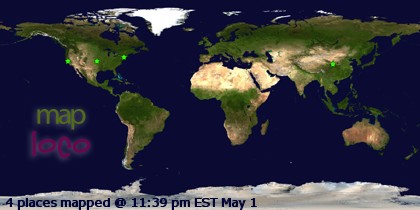Day 1: Home to Moose Jaw (8 hrs drive)
Day 2: Moose Jaw to Brandon (4.5 hrs drive)
My friend Liz lives in Brandon, and her job is as an agronomist with DeKalb. An agronomist is an expert in plant science (she's hopefully getting into a Masters program soon), and DeKalb is a division of -- MONSANTO. Yes, the great Satan everyone seems to hate -- well, at least those who don't have degrees in plant science, but instead from "Google University".
We were hoping for a tour around the exciting town of Brandon ("Wheat Capital of Canada", and home to the Brandon Wheat Kings), but instead got invited to come with her to "take off some test plots". Lessons in where your food comes from, I guess.
We drove north from Brandon and picked up her weigh wagon -- from a place where crop dusters are based! Meaning there was an Air Tractor AT-502B being cleaned.
 |
| Airplanes! Up close! |
 |
| My friend Llisa would love to photograph this place |
Liz convinces the farmer to try growing 5 different types of soybeans side by side as an experiment in yield mazimization. DeKalb gives the farmer the seed, the farmer lets them use his land, and the farmer gets the soybeans to sell when he harvests them. In turn, the farmer learns which soybean seed variety has the highest yield, which is most resistant to weeds, and in general which is best to grow on his land. His part of the bargain -- because he was going to plant soybeans anyway -- is to let Liz be there when he harvests, and harvest the plots in a specific way to insure Liz knows exactly how many acres he's combining. For each plot, the farmer gets to treat it just like he would treat anything he planted there, so for him, there's no "extra" work during the season, just during seeding and harvesting.
The seeds are set out in strips of specific equal widths. GPS data is used to know exactly where the strips are.
 |
| Marked for passers by, not the farmer. See the colours? |
 |
| Liz and her wagon |
 |
| Combining |
 |
| Liz watching |
 |
| Pulling up |
 |
| "Spilling the beans" |
 |
| The process |
 |
| Playing with the thing |
 |
| Carefully measuring using Tupperware |
 |
| From above |
 |
| When in doubt, bash it |
 |
| Strip #3 |
 |
| Soybeans |
 |
| The plant ready to harvest |
 |
| The combine shreds the stems and empty seed pods |
 |
| A funny looking field when done |
Liz spends 12 hrs a day, 7 days a week during harvest doing this. She has 35 test plots; soybeans, corn and others in test, and when it comes to harvest, everything happens at once. Her territory is 150 km by 50 km, so 7,500 square kilometres. She lives in her truck.
It was really interesting for us to watch the operation. I know exactly squat about farming, especially grain farming, and we thanked the farmer Mike for letting us come watch, and it was great getting insight into life as an agronomist, too. Thanks, Liz
Next post: 2 solid days of driving.


No comments:
Post a Comment